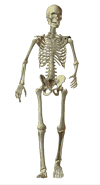Free Shipping On Orders Over $100
Unior Bionic Ortho Unibionix Stem and Cup (Implant 2212161)
Fokter et al: Results of Total Hip Arthroplasty Using a Bionic Hip Stem published in International Orthopaedics: Click Here
About Unior Bionic Ortho Unibionix Stem and Cup (Implant 2212161)
Dr. Hines by a colleague received this image from a colleague and then shared it with OrthopaedicLIST.com. It was identified by Berk Gencer and Chris Wilson as you can see below. In addition, there are now also several comments from those with experience with this prosthesis.
Courtesy of
Jeremy T. Hines, MD
Hip and Knee, Adult Joint Reconstruction
EmergeOrtho, Coastal Region
Wilmington, NC, USA
Identified by Berk Gencer and Chris Wilson as a Unior Bionic Ortho Unibionix Stem and Cup by Holz and Copf from Slovenia. They learned of this via Instagram and informed OrthopaedicLIST.com via LinkedIn.
Arthur de Gast, MD, PhD cited an article about them: https://link.springer.com/article/10.1007/s00264-014-2623-4.
Comments from Prof.Dr.med. Peter Aldinger, Arztlicher Direktor, Orthopaedische Klinik Pauli in Stuttgart: "It was designed in Stuttgart by Copf/Holtz. 1st version CoCr Alloy (left). 2nd version Titanium Alloy (right). Revised a couple of these, large defects..."
Comments from Samo K. Fokter, MD, PhD, Consultant Orthopedic Surgeon, University Medical Center, Maribor, Slovenia and lead author of the above-cited article: "These implants were designed by Prof. Copf, a Slovenian orthopedic surgeon who worked in Germany. The producer of the first generation of these "bionic" implants that were made of Tantlum, was a German company. The second generation of implants were made of Ti-alloy and appear bulkier on x-rays. According to the plans, the production of the second generation should be in Slovenia (Unior Bionic, a hand-toolsmaking company from Zrece, Slovenia). Unfortunately, the company later did not decide to go into serial production. I was involved in the design modification of the femoral stem for the third generation (described in the cited article). The idea behind the design was that the prosthesis will integrate itself into the cancellous bone. Therefore, all hollow areas were filled with autologous bone chips before insertion."
Please see a PDF of Dr. Fokter's paper in the column to the right.
Request Product Information
Disclaimer:
OrthopaedicLIST.com is a list of products and services. Every effort is made to keep this listing as accurate and current as possible. Companies and individuals are encouraged to notify us of errors and omissions. We will respond to such messages of correction in a timely fashion, as our workload permits.
We are non-judgmental of products listed. We are not in the business of evaluating products. We have not evaluated these products. We make no representations as to the quality, effectiveness, suitability or appropriateness of any of the products listed.
As an important component of the service function of OrthopaedicLIST.com, some products continue to be listed that are no longer manufactured and may not be available. We will identify them as such when possible. This allows users to find special instruments and/or components for removal, modification, and/or revision of those products.
OrthopaedicLIST.com is a list of products and services. Every effort is made to keep this listing as accurate and current as possible. Companies and individuals are encouraged to notify us of errors and omissions. We will respond to such messages of correction in a timely fashion, as our workload permits.
We are non-judgmental of products listed. We are not in the business of evaluating products. We have not evaluated these products. We make no representations as to the quality, effectiveness, suitability or appropriateness of any of the products listed.
As an important component of the service function of OrthopaedicLIST.com, some products continue to be listed that are no longer manufactured and may not be available. We will identify them as such when possible. This allows users to find special instruments and/or components for removal, modification, and/or revision of those products.




 Click to Enlarge
Click to Enlarge